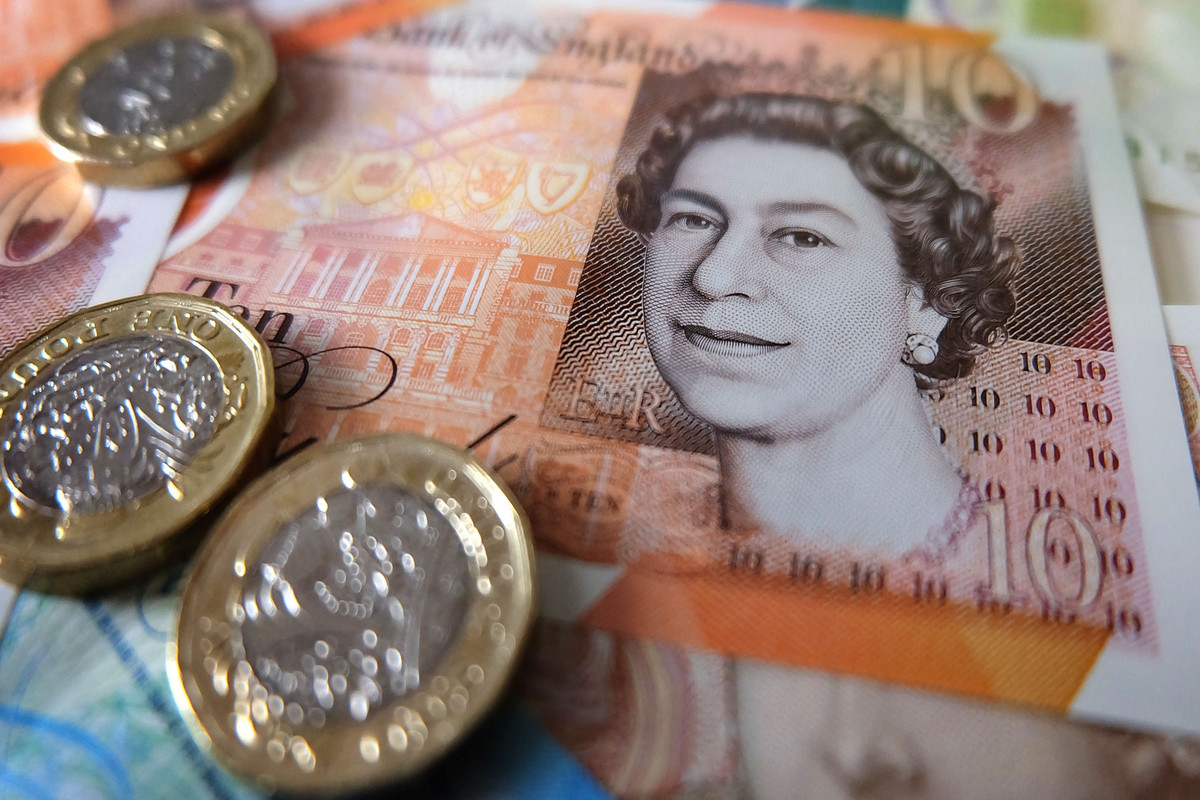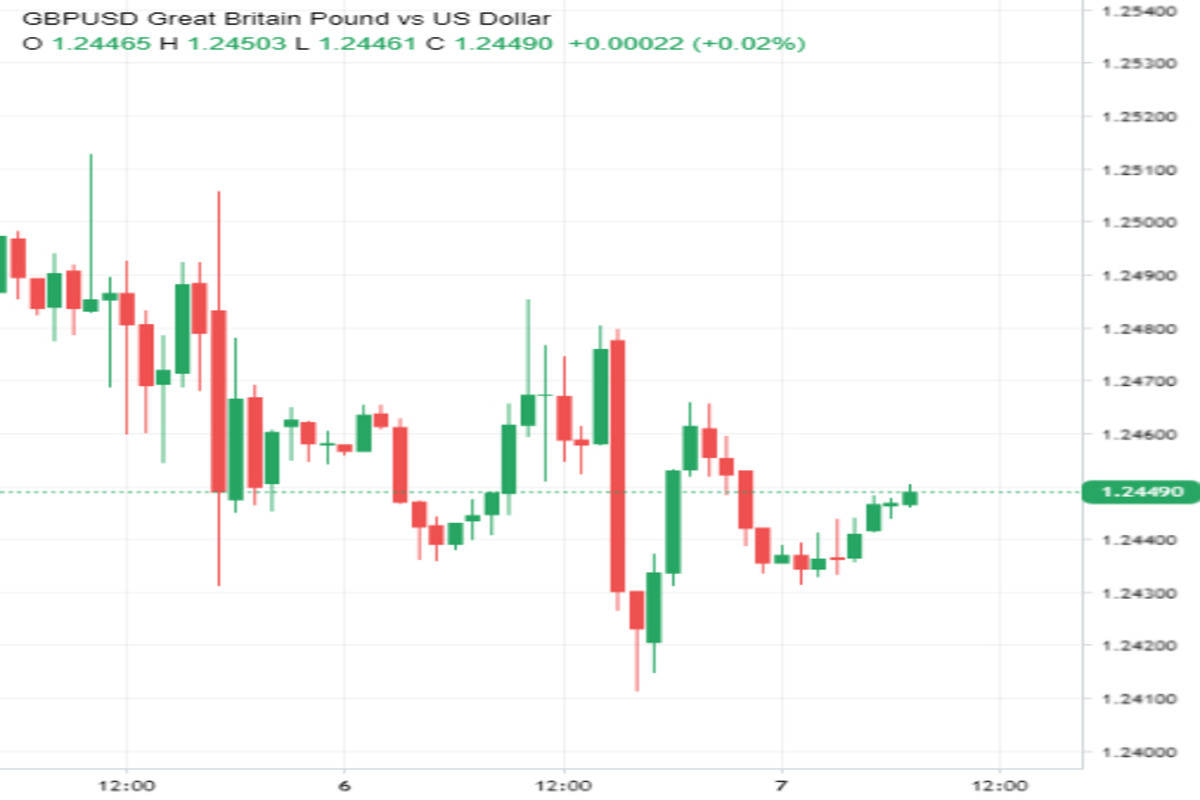
At the start of the weekly session, the British pound took a strong momentum against the US dollar but lost steam by the end of the week. Many analysts believe that GBP is now accumulating strength for a new surge and expect the sterling rally to resume in the short term.
GBP has more chances to rise
The best day for the British currency in the past week was Tuesday when it jumped against the dollar to a 10-month high at 1.253. The trigger for sterling was a significant weakening of hawkish market expectations regarding the Federal Reserve's future monetary policy.
Weak US macroeconomic data published at the beginning of the week further convinced investors that the American regulator is approaching the end of the current tightening cycle, especially as signs of disinflation appeared in the economy.
There was enough pessimistic data this week. The US reported a sharp decline in business activity in the manufacturing sector and the services sector, as well as a noticeable reduction in the number of job openings and the number of new jobs in private companies.
Putting all these facts together like a puzzle, the market saw a bleak picture: the US economy, weakened by tight monetary and credit conditions, is moving downhill and heading toward a recession.
To prevent an economic downturn, the Federal Reserve is likely to halt interest rate hikes at its next meeting in May. This is the opinion currently held by the majority of market participants. The probability of a pause is estimated at over 50%.
This forecast contrasts sharply with traders' current expectations regarding the Bank of England's interest rate decision in May.
At present, investors estimate the likelihood of the BoE raising the rate by 25 basis points next month at over 70%.
The market's confidence in the British regulator's determination was reinforced this week by a comment from the Bank of England's chief economist, Hugh Pill. The official stated that it is still too early to consider halting tightening and hinted at the need to "finish the job."
In February, inflation in the UK unexpectedly jumped to 10.4%, significantly above the BoE's 2% target.
The market is well aware that the Bank of England's future monetary strategy will depend on incoming data. Given February's price spike, it is hard to imagine that the inflation situation will change dramatically in the near term. This gives hope for the continuation of aggressive monetary policy in the country.
Hawkish expectations are also supported by the current state of the British economy. According to numerous data, this year, things in the United Kingdom are going much better than expected earlier.
"The final S&P Global release for the previous month showed that the British economy grew again and signaled that the rise has some sustainability, as positive dynamics are now observed in both the services and manufacturing sectors," Oxford Economics analyst Andrew Goodwin noted.
In turn, Deutsche Bank expert Shreyas Gopal believes that positive domestic news can support the pound just as much as a favorable external background. "Taking all these factors into account, we still expect a rise in the GBP/USD pair in the medium and long term," he said.
According to the expert's forecast, in the second quarter of the year, the pound will trade against the dollar at the level of 1.25, and by the fourth quarter, it will rise to 1.28. For this reason, the strategist recommends staying in long positions on the sterling.
Montgomery Koning, an analyst at British consulting firm TS Lombard, shares the same opinion. The expert recently stated that she sees potential for further strengthening of the GBP/USD pair. "We expect a sharp decline in rates from the Federal Reserve at the end of 2023 due to the recession. This means that the interest rate difference between the US and the UK will begin to narrow, which will support the pound's growth against the dollar," Koning explained.
Short-term outlook for GBP/USD
Yesterday, the pound-dollar pair retreated from the 10-month high reached earlier in the week. The intraday low for the pair was 1.241.

Pressure on the British currency came from the macroeconomic data. On Thursday, consulting firm Halifax reported a decline in activity in the UK construction industry due to a sharp drop in demand for housing, which was exacerbated by rising interest rates.
However, most analysts consider the recent pound's decline a temporary weakness and predict the pound's swift return to confident growth.
The sterling may receive a strong boost today after the publication of the monthly US employment report. If the March nonfarm payrolls turn out to be much weaker than the previous release, it will provide yet another compelling argument for the Federal Reserve to halt tightening.
Currently, analysts expect that the US labor market added 239,000 jobs in the past month, lower than the February reading of 311,000.
If the forecast comes true or we see an even more significant slowdown in the US labor market, it will ultimately convince investors that the Federal Reserve will not rock the boat and is likely to pause its rate hiking cycle in May.
Such a scenario is unfavorable for the US dollar but may serve as rocket fuel for the British pound. Economists at Scotiabank expect the GBP/USD pair to continue its upward movement and trade in a wider range in the short term.
"The momentum of the pound-dollar trend remains bullish. This implies limited declines and sustained growth potential towards the 1.2750 level," the analysts noted.
 English
English 
 Русский
Русский Bahasa Indonesia
Bahasa Indonesia Bahasa Malay
Bahasa Malay ไทย
ไทย Español
Español Deutsch
Deutsch Български
Български Français
Français Tiếng Việt
Tiếng Việt 中文
中文 বাংলা
বাংলা हिन्दी
हिन्दी Čeština
Čeština Українська
Українська Română
Română

